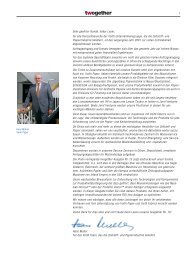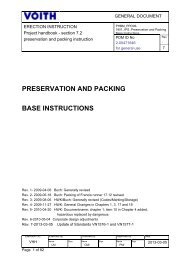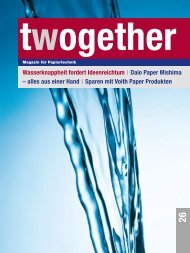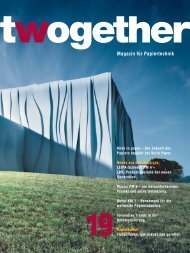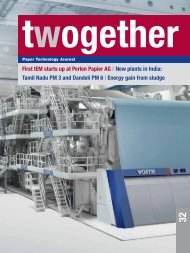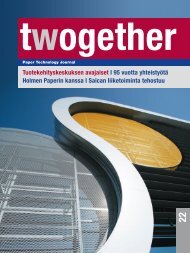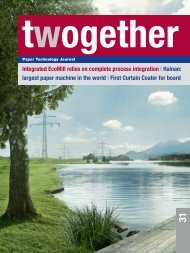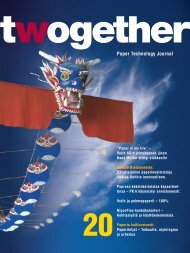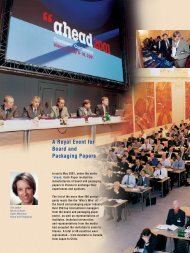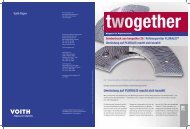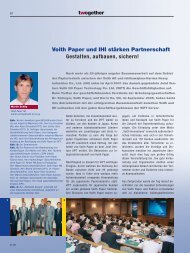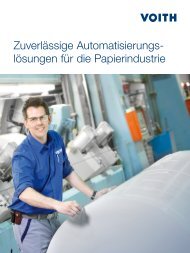Create successful ePaper yourself
Turn your PDF publications into a flip-book with our unique Google optimized e-Paper software.
58<br />
Walter Blum<br />
<strong>Voith</strong> <strong>Paper</strong><br />
walter.blum@voith.com<br />
<strong>17</strong>/04<br />
DuoShake –<br />
continues to be successful<br />
The DuoShake has proven its potential<br />
and superiority on 70 paper machines<br />
worldwide – in the meantime, from China<br />
through Europe to North and South America.<br />
This extends over the entire bandwidth<br />
from low-speed machines to highspeed<br />
machines running at 1,200 m/min<br />
as well as at basis weights from 18 g/m 2<br />
to 550 g/m 2 .<br />
The advantage of the DuoShake over conventional<br />
shakes is mainly due to the fact<br />
that the DuoShake only transmits negligible<br />
centering and frictional forces to the<br />
foundation. Other shakes on the market<br />
do not have these advantages and support<br />
their shake rod force in the machine<br />
foundation. This means that extensive<br />
constructional measures are required to<br />
take up these forces. No special foundations<br />
are required for the DuoShake, except<br />
a steel base.<br />
The operating principle of the DuoShake<br />
permits shake frequencies that are not<br />
achievable with any conventional shake.<br />
Through this, distinctly measurable improvements<br />
in formation can be reached<br />
even at very high machine speeds.<br />
The shake characteristic number is calculated<br />
with the following formula:<br />
Frequency 2 x stroke<br />
Machine speed<br />
It has been found that, as a rule, the best<br />
results are reached at shake characteristic<br />
numbers from approx. 3,000 to 4,000.<br />
If a frequency of 280 strokes/minute and<br />
a stroke of 14 mm are now taken as a<br />
basis for a shake, this results, at a machine<br />
speed of v = 300 m/min, in a shake<br />
characteristic number of 3,659. However,<br />
if the machine speed is raised to v =<br />
1,000 m/min, this results in a shake characteristic<br />
number of only 1,098, which<br />
has hardly any influence on formation.<br />
With the DuoShake an excellent value at<br />
much higher shake frequencies is<br />
reached even at higher machine speeds.<br />
At a shake frequency of, for example,



